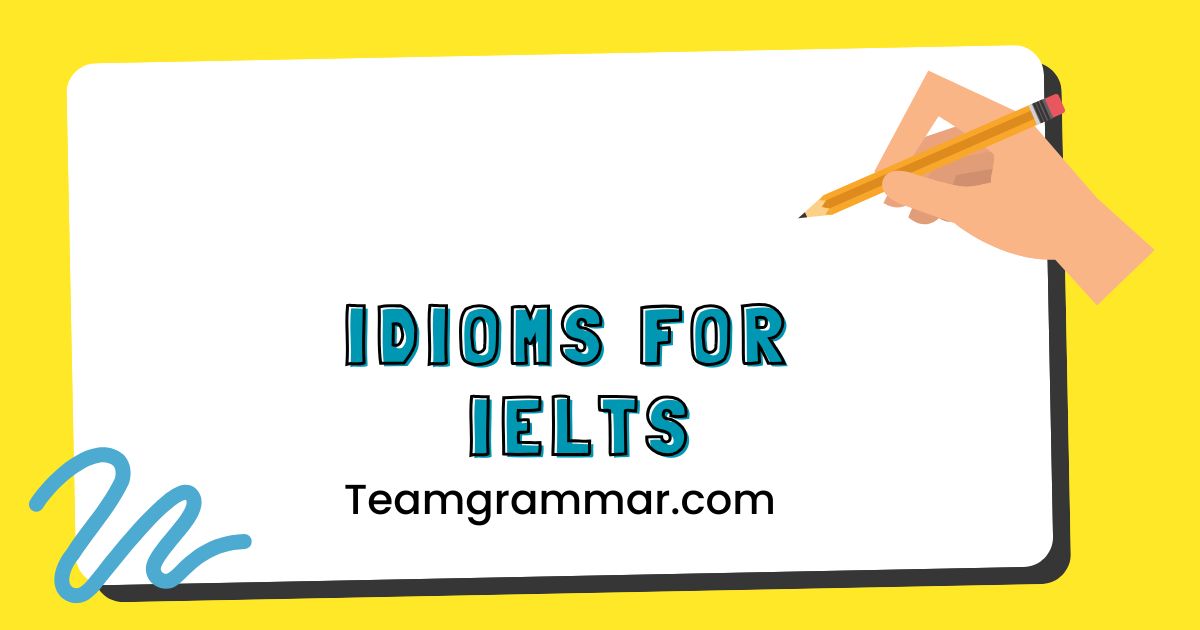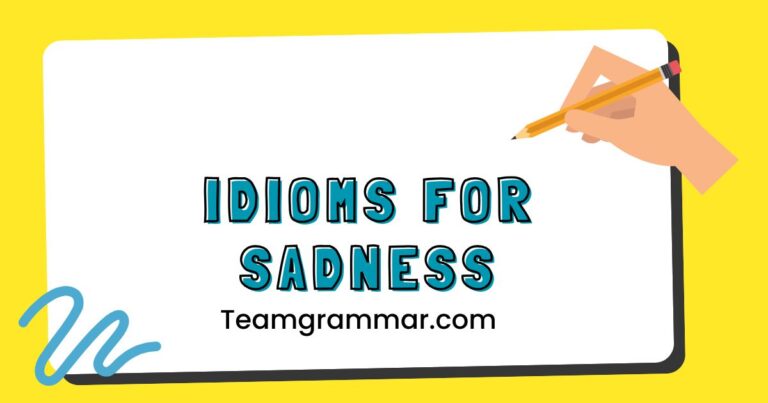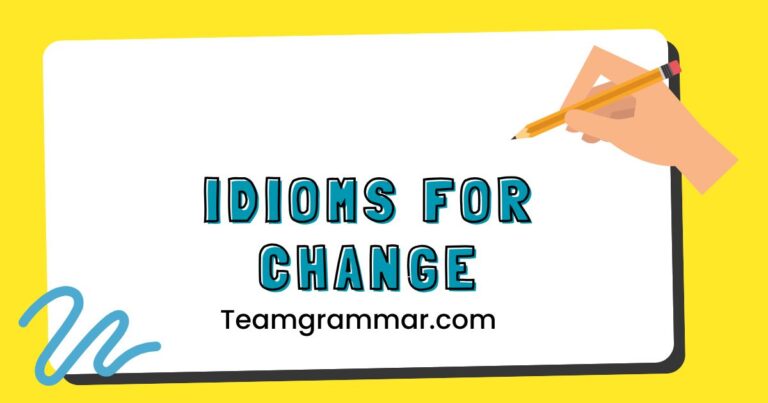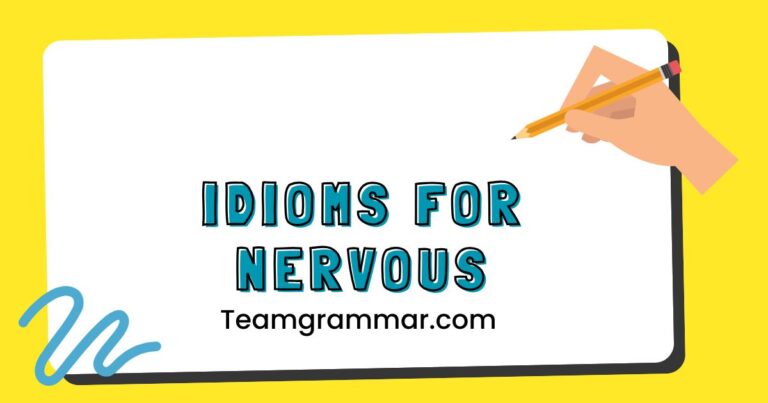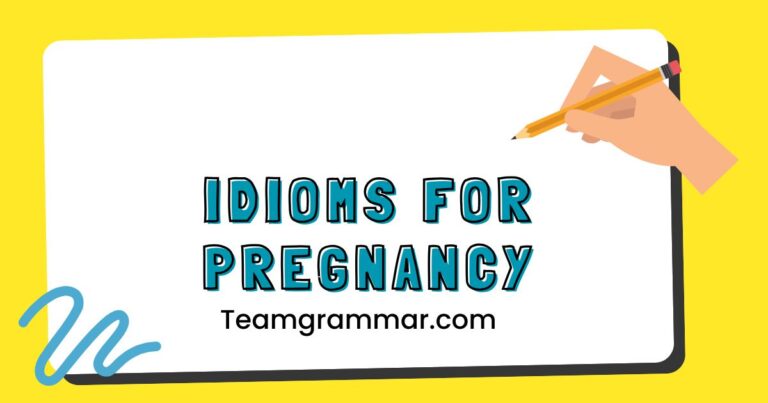49 Mastering IELTS Idioms: A Comprehensive Guide for Exam Success
Idioms are a crucial aspect of the English language, adding color and depth to communication. For IELTS (International English Language Testing System) candidates, understanding and appropriately using idioms can significantly boost their scores in both speaking and writing.
This article provides a comprehensive guide to mastering idioms for the IELTS exam, covering definitions, structural breakdowns, usage rules, common mistakes, and practice exercises. Whether you are aiming for a band score of 7 or higher, this guide will equip you with the knowledge and skills necessary to confidently use idioms and enhance your overall language proficiency.
Table of Contents
- Introduction
- Definition of Idioms
- Structural Breakdown
- Types and Categories of Idioms
- Examples of Idioms
- Usage Rules for Idioms
- Common Mistakes with Idioms
- Practice Exercises
- Advanced Topics: Nuances and Subtleties
- Frequently Asked Questions (FAQ)
- Conclusion
Introduction
Idioms are expressions whose meanings cannot be understood from the literal meanings of the individual words. They are figurative language elements that add richness and nuance to English.
In the context of the IELTS exam, a strong command of idioms demonstrates a sophisticated understanding of the English language. This ability can significantly improve your scores, particularly in the Speaking and Writing sections, where fluency and natural language use are highly valued.
This comprehensive guide is designed to provide you with a thorough understanding of idioms, their structure, usage, and common pitfalls. By mastering the concepts and practicing the exercises in this article, you will be well-equipped to use idioms effectively and appropriately in your IELTS exam, boosting your overall performance and achieving your desired band score.
This guide is suitable for intermediate to advanced English learners preparing for the IELTS exam as well as for anyone looking to enhance their understanding and use of English idioms.
Definition of Idioms
An idiom is a phrase or expression whose meaning is different from the literal meaning of the individual words it contains. Idioms are a type of figurative language, relying on shared cultural and linguistic knowledge to convey a specific idea or emotion.
They are deeply embedded in the English language and are essential for understanding and communicating effectively.
Classification of Idioms
Idioms can be classified based on their structure, function, and the type of meaning they convey. Some common classifications include:
- Phrasal Verbs: These are idioms that combine a verb with a preposition or adverb (e.g., look up, give up).
- Clichés: These are overused idioms that have lost their original impact (e.g., as old as time, better late than never).
- Proverbs: These are short, well-known sayings that express a general truth or piece of advice (e.g., actions speak louder than words, a penny saved is a penny earned).
- Figurative Expressions: These are idioms that use metaphors, similes, or other figures of speech to convey a meaning (e.g., a piece of cake, break a leg).
Function of Idioms
Idioms serve several important functions in communication:
- Adding Color and Nuance: Idioms make language more expressive and engaging.
- Conveying Complex Ideas Concisely: Idioms can often express a complex idea in a few words.
- Demonstrating Cultural Understanding: Using idioms correctly shows that you understand the cultural context of the language.
- Enhancing Fluency: Idioms help you speak and write more naturally and fluently.
Contexts for Using Idioms
Idioms are used in a variety of contexts, including:
- Informal Conversations: Idioms are common in everyday speech.
- Writing: Idioms can add interest and personality to written texts, such as articles, stories, and essays.
- Presentations: Idioms can make presentations more engaging and memorable.
- IELTS Exam: Using idioms appropriately in the Speaking and Writing sections can improve your score.
Structural Breakdown
Understanding the structure of idioms is crucial for using them correctly. Idioms can vary in their grammatical structure, but they generally consist of a combination of words that, when taken together, have a meaning distinct from the individual words.
Let’s explore the structural elements and patterns of idioms.
Components of Idioms
Idioms typically consist of the following components:
- Verbs: Many idioms contain verbs that contribute to the overall meaning (e.g., kick the bucket, get the ball rolling).
- Nouns: Nouns often play a key role in idioms, providing context and meaning (e.g., piece of cake, the elephant in the room).
- Prepositions: Prepositions are frequently used in idioms to create phrasal verbs or to connect different parts of the expression (e.g., look up to, get away with).
- Adjectives: Adjectives can add descriptive detail to idioms (e.g., brand new, crystal clear).
- Adverbs: Adverbs can modify verbs or adjectives within idioms (e.g., through thick and thin, by and large).
Common Idiomatic Patterns
Several common patterns appear in idioms:
- Verb + Preposition/Adverb (Phrasal Verbs): These are very common and often have meanings that are difficult to guess from the individual words (e.g., break down, look after).
- Noun + Preposition + Noun: These idioms often describe relationships or situations (e.g., a drop in the ocean, the best of both worlds).
- Adjective + Noun: These idioms often describe qualities or characteristics (e.g., a dark horse, a golden opportunity).
- Fixed Phrases: These idioms have a set structure that cannot be changed without altering the meaning (e.g., at the drop of a hat, in the nick of time).
Examples of Structural Patterns
Here’s a table illustrating some of these structural patterns with examples:
| Pattern | Example | Meaning |
|---|---|---|
| Verb + Preposition | Look up to | To admire and respect someone |
| Verb + Adverb | Give up | To stop trying |
| Noun + Preposition + Noun | A pain in the neck | Someone or something that is annoying |
| Adjective + Noun | A hot potato | A controversial issue |
| Fixed Phrase | At the drop of a hat | Immediately, without hesitation |
By understanding these structural patterns, you can better recognize and use idioms correctly in your speech and writing.
Types and Categories of Idioms
Idioms can be categorized in various ways, depending on their function, meaning, and origin. Understanding these categories can help you appreciate the diversity of idioms and use them more effectively.
Let’s explore some common types and categories of idioms.
Categorizing Idioms by Meaning
One way to categorize idioms is by the type of meaning they convey:
- Idioms Describing Emotions: These idioms express feelings or emotional states (e.g., on cloud nine, down in the dumps).
- Idioms Describing Actions: These idioms describe actions or behaviors (e.g., beat around the bush, bite the bullet).
- Idioms Describing Situations: These idioms describe events or circumstances (e.g., a perfect storm, a blessing in disguise).
- Idioms Describing Qualities: These idioms describe characteristics or traits (e.g., as cool as a cucumber, a diamond in the rough).
Categorizing Idioms by Origin
Another way to categorize idioms is by their origin or source:
- Literary Idioms: These idioms originate from literature (e.g., all that glitters is not gold, from Shakespeare).
- Historical Idioms: These idioms originate from historical events or figures (e.g., crossing the Rubicon, from Julius Caesar).
- Sports-Related Idioms: These idioms originate from sports (e.g., ballpark figure, below the belt).
- Everyday Life Idioms: These idioms originate from common, everyday experiences (e.g., piece of cake, break a leg).
Categorizing Idioms by Function
Idioms can also be categorized by their function in a sentence:
- Idiomatic Verbs: Function as the verb in the sentence (e.g., call it a day).
- Idiomatic Adjectives: Function as adjectives, describing a noun (e.g., stone cold).
- Idiomatic Adverbs: Function as adverbs, modifying a verb, adjective, or another adverb (e.g., by and large).
Examples of Idioms
To truly master idioms, it is essential to study numerous examples and understand their meanings in context. This section provides a comprehensive collection of idioms, organized by category, to help you expand your vocabulary and improve your understanding of idiomatic expressions.
Idioms Describing Emotions
The following table presents idioms commonly used to describe various emotions. Understanding these idioms can help you express your feelings more precisely and understand the emotions of others.
| Idiom | Meaning | Example Sentence |
|---|---|---|
| On cloud nine | Extremely happy | She was on cloud nine after receiving the acceptance letter from her dream university. |
| Down in the dumps | Sad or depressed | He’s been down in the dumps ever since he lost his job. |
| Over the moon | Extremely pleased | They were over the moon when they found out they were expecting a baby. |
| Feeling blue | Sad or unhappy | I’m feeling blue today because the weather is so gloomy. |
| Walking on air | Feeling very happy and excited | After the successful presentation, he was walking on air. |
| Mad as a hatter | Completely insane | He’s been acting mad as a hatter ever since the accident. |
| Tickled pink | Very pleased or amused | She was tickled pink by the surprise party her friends threw for her. |
| In seventh heaven | Extremely happy or content | They were in seventh heaven during their honeymoon in Italy. |
| A nervous wreck | Extremely anxious or nervous | She was a nervous wreck before her driving test. |
| Scared stiff | Extremely frightened | The loud noise scared me stiff. |
| Happy-go-lucky | Carefree and cheerful | He’s a happy-go-lucky person who always looks on the bright side of life. |
| Biting someone’s head off | To speak to someone angrily | She bit his head off when he was late for the meeting. |
| Having a whale of a time | Having a very enjoyable time | We had a whale of a time at the beach last weekend. |
| Like a cat that got the cream | Very pleased with oneself | He looked like a cat that got the cream after winning the competition. |
| Beside oneself | Overcome with emotion (usually anger or grief) | She was beside herself with grief when she heard the news. |
| Up in arms | Angry and protesting about something | The residents were up in arms about the new development plans. |
| In high spirits | Cheerful and lively | The team was in high spirits after their victory. |
| At wit’s end | Not knowing what to do | I’m at my wit’s end trying to solve this problem. |
| Gutted | Extremely disappointed | He was gutted when he didn’t get the job. |
| Cheesed off | Annoyed or fed up | I’m cheesed off with the constant delays. |
Idioms Describing Actions
This table presents idioms that describe various actions or behaviors. These idioms can add color and precision to your descriptions of events and activities.
| Idiom | Meaning | Example Sentence |
|---|---|---|
| Beat around the bush | Avoid getting to the point | Stop beating around the bush and tell me what you really think. |
| Bite the bullet | Face a difficult situation with courage | I didn’t want to go to the dentist, but I had to bite the bullet. |
| Call it a day | Stop working on something | It’s getting late; let’s call it a day. |
| Cut to the chase | Get to the point quickly | Let’s cut to the chase and discuss the main issues. |
| Get the ball rolling | Start something | We need to get the ball rolling on this project. |
| Jump the gun | Start something too early | He jumped the gun and announced the news before it was confirmed. |
| Miss the boat | Miss an opportunity | If you don’t apply now, you might miss the boat. |
| Pull someone’s leg | Tease or joke with someone | Are you serious, or are you just pulling my leg? |
| Spill the beans | Reveal a secret | She spilled the beans about the surprise party. |
| Take the bull by the horns | Face a challenge directly | I decided to take the bull by the horns and confront my boss about the issue. |
| Burn the midnight oil | Work late into the night | I had to burn the midnight oil to finish the report. |
| Go the extra mile | Do more than what is expected | She always goes the extra mile to help her colleagues. |
| Hit the books | Study hard | I need to hit the books if I want to pass the exam. |
| Let the cat out of the bag | Reveal a secret unintentionally | He let the cat out of the bag when he mentioned the surprise. |
| Make a mountain out of a molehill | Exaggerate a problem | Don’t make a mountain out of a molehill; it’s not that serious. |
| Paint the town red | Go out and have a good time | Let’s paint the town red to celebrate our graduation. |
| Ring a bell | Sound familiar | That name doesn’t ring a bell. |
| See eye to eye | Agree with someone | We don’t always see eye to eye, but we respect each other’s opinions. |
| Sweep something under the rug | Ignore or hide a problem | They tried to sweep the issue under the rug, but it eventually came to light. |
| Turn over a new leaf | Start behaving in a better way | He decided to turn over a new leaf and quit smoking. |
Idioms Describing Situations
This table provides idioms used to describe various situations or circumstances. Using these idioms can help you articulate complex scenarios in a concise and vivid manner.
| Idiom | Meaning | Example Sentence |
|---|---|---|
| A perfect storm | A combination of events that makes a situation worse | The company faced a perfect storm of economic downturn and increased competition. |
| A blessing in disguise | Something that seems bad but turns out to be good | Losing his job was a blessing in disguise because it led him to start his own business. |
| A piece of cake | Very easy | The exam was a piece of cake. |
| A drop in the ocean | A very small amount compared to what is needed | The donation was a drop in the ocean compared to the total cost of the project. |
| The best of both worlds | Having the advantages of two different things | Living in the countryside offers the best of both worlds: peace and quiet, yet close to the city. |
| The elephant in the room | An obvious problem that no one wants to discuss | The company’s financial difficulties were the elephant in the room during the meeting. |
| A hot potato | A controversial issue | Climate change is a hot potato in the political arena. |
| Once in a blue moon | Very rarely | We only go to that restaurant once in a blue moon. |
| When pigs fly | Something that will never happen | “I’ll believe it when pigs fly,” he said sarcastically. |
| In the same boat | In the same difficult situation | We’re all in the same boat when it comes to the economic crisis. |
| A ballpark figure | An approximate number | Can you give me a ballpark figure for the cost of the project? |
| A long shot | Something with a very low chance of success | Winning the lottery is a long shot, but some people still try. |
| A vicious cycle | A situation where one problem leads to another | Poverty and lack of education create a vicious cycle. |
| At a crossroads | At a point where a decision needs to be made | He’s at a crossroads in his career and doesn’t know which path to take. |
| Back to square one | Having to start over | The negotiations failed, so we’re back to square one. |
| In deep water | In serious trouble | He’s in deep water with the tax authorities. |
| In the heat of the moment | While feeling very angry or excited | He said things in the heat of the moment that he later regretted. |
| On the back burner | Given low priority | We’ve put that project on the back burner for now. |
| Out of the woods | Out of danger or difficulty | The patient is still in the hospital, but he’s out of the woods. |
| Touch and go | Uncertain outcome | The surgery was touch and go, but fortunately, it was successful. |
Usage Rules for Idioms
Using idioms correctly requires an understanding of their specific meanings and the contexts in which they are appropriate. This section outlines the key usage rules for idioms, including considerations for formality, regional variations, and grammatical constraints.
Formality
Idioms are generally more common in informal contexts, such as casual conversations and personal writing. In formal settings, such as academic papers or business presentations, it is often better to use more direct and literal language.
However, some idioms are considered relatively formal and can be used in a wider range of contexts.
Example:
- Informal: “We need to get our act together if we want to meet the deadline.”
- Formal: “We need to organize ourselves effectively if we want to meet the deadline.”
Regional Variations
Idioms can vary significantly between different regions and dialects of English. An idiom that is common in one region may be unfamiliar or have a different meaning in another.
It is important to be aware of these regional variations and to use idioms that are appropriate for your audience.
Example:
- In the UK, “taking the mickey” means to tease or make fun of someone.
- In the US, a similar idiom is “pulling someone’s leg.”
Grammatical Constraints
Idioms often have fixed grammatical structures that cannot be altered without changing their meaning or making them nonsensical. It is important to use the correct verb tense, word order, and prepositions when using idioms.
Example:
- Correct: “He kicked the bucket.” (He died.)
- Incorrect: “He kicks the bucket.” (This changes the meaning and sounds unnatural.)
Exceptions and Special Cases
Some idioms have exceptions or special cases that need to be considered. For example, some idioms can be used in the passive voice, while others cannot.
It is important to learn these exceptions through exposure and practice.
Example:
- Active: “They let the cat out of the bag.”
- Passive: “The cat was let out of the bag.”
Common Mistakes with Idioms
One of the challenges of learning idioms is avoiding common mistakes. This section identifies frequent errors that learners make when using idioms and provides correct examples to illustrate the proper usage.
Literal Interpretation
A common mistake is interpreting an idiom literally, which can lead to misunderstandings and humorous errors.
Example:
- Incorrect: “It’s raining cats and dogs” (implying animals are falling from the sky).
- Correct: “It’s raining cats and dogs” (meaning it’s raining very heavily).
Incorrect Word Order
Changing the word order of an idiom can alter its meaning or make it nonsensical.
Example:
- Incorrect: “The beans spilled she.”
- Correct: “She spilled the beans.”
Wrong Prepositions
Using the wrong preposition in a phrasal verb or other idiomatic expression can change the meaning.
Example:
- Incorrect: “I’m looking forward to see you.”
- Correct: “I’m looking forward to seeing you.”
Mixing Idioms
Combining parts of different idioms can create a confusing and incorrect expression.
Example:
- Incorrect: “We’ll burn that bridge when we get to it.” (Mixing “burn bridges” and “cross that bridge when we come to it.”)
- Correct: “We’ll cross that bridge when we come to it.”
Using Idioms Inappropriately
Using informal idioms in formal contexts can make your writing or speech seem unprofessional.
Example
- Incorrect (Formal Context): The CEO needs to get his act together to improve company performance.
- Correct (Formal Context): The CEO needs to improve organizational efficiency to enhance company performance.
Practice Exercises
To solidify your understanding of idioms, it’s essential to practice using them in context. This section provides several practice exercises with varying levels of difficulty to help you master the use of idioms.
Exercise 1: Fill in the Blanks
Complete the following sentences with the appropriate idiom from the list below.
Idiom List: piece of cake, bite the bullet, call it a day, miss the boat, spill the beans, break a leg, hit the books, once in a blue moon, in the same boat, on cloud nine
| Question | Answer |
|---|---|
| 1. The exam was a _______; I finished it in half the time. | piece of cake |
| 2. I didn’t want to get vaccinated, but I had to _______ for the sake of my health. | bite the bullet |
| 3. It’s getting late; let’s _______ and continue tomorrow. | call it a day |
| 4. If you don’t apply for the scholarship now, you might _______. | miss the boat |
| 5. She accidentally _______ about the surprise party. | spilled the beans |
| 6. _______! I hope you do well in your performance. | break a leg |
| 7. I need to _______ if I want to pass the test. | hit the books |
| 8. We only go to that fancy restaurant _______. | once in a blue moon |
| 9. We’re all _______ because the company is facing financial difficulties. | in the same boat |
| 10. She was _______ after getting engaged. | on cloud nine |
Exercise 2: Matching Idioms to Meanings
Match each idiom in Column A with its correct meaning in Column B.
| Column A (Idiom) | Column B (Meaning) | Answer |
|---|---|---|
| 1. Beat around the bush | a. To face a challenge directly | 1-b |
| 2. Take the bull by the horns | b. To avoid getting to the point | 2-a |
| 3. A blessing in disguise | c. Something that seems bad but turns out to be good | 3-c |
| 4. Let the cat out of the bag | d. To reveal a secret unintentionally | 4-d |
| 5. See eye to eye | e. To agree with someone | 5-e |
Exercise 3: Sentence Completion
Use the given idioms to complete the sentences below.
Idioms: A hot potato, in deep water, at a crossroads, back to square one, out of the woods
| Question | Answer |
|---|---|
| 1. Climate change is _______ in the political arena. | A hot potato |
| 2. Because of his gambling debts, he is _______. | In deep water |
| 3. After losing his job, he felt he was _______ in his career. | At a crossroads |
| 4. Since the experiment failed, we are _______. | Back to square one |
| 5. The patient is recovering well, but he is not completely _______. | Out of the woods |
Advanced Topics: Nuances and Subtleties
For advanced learners, understanding the nuances and subtleties of idioms is essential for using them with precision and flair. This section explores advanced topics such as idiomatic variations, contextual appropriateness, and the use of idioms in figurative language.
Idiomatic Variations
Many idioms have slight variations in wording that can affect their meaning or tone. It is important to be aware of these variations and to choose the most appropriate form for the context.
Examples:
- “Barking up the wrong tree” vs. “Up the wrong tree“
- “Once in a blue moon” vs. “Every blue moon“(less common).
Contextual Appropriateness
Using idioms appropriately requires a deep understanding of the social and cultural context. Some idioms may be offensive or inappropriate in certain situations, while others may be too informal for formal settings.
Example:
- Avoid using idioms that rely on stereotypes or derogatory language.
Idioms in Figurative Language
Idioms can be used creatively in figurative language to add depth and complexity to your writing. By combining idioms with other figures of speech, such as metaphors and similes, you can create powerful and memorable images.
Example:
- “The project was a perfect storm of challenges, each one adding to the intensity of the situation.”
Frequently Asked Questions (FAQ)
This section addresses some common questions that learners have about idioms, providing detailed answers and explanations to clarify any confusion.
- What is the difference between an idiom and a proverb?
- How can I learn new idioms effectively?
- Is it okay to use idioms in formal writing?
- Are there any idioms I should avoid using?
- How can I improve my pronunciation of idioms?
- What should I do if I don’t understand an idiom?
An idiom is a phrase whose meaning is different from the literal meaning of its individual words, while a proverb is a short, well-known saying that expresses a general truth or piece of advice. Idioms are often figurative expressions, while proverbs are typically statements of wisdom or common sense.
The most effective way to learn new idioms is through extensive reading and listening. Pay attention to how native speakers use idioms in context, and make a note of any unfamiliar expressions.
You can also use idiom dictionaries and online resources to expand your vocabulary.
It depends on the specific idiom and the overall tone of your writing. Some idioms are considered relatively formal and can be used in a wider range of contexts, while others are more appropriate for informal settings.
When in doubt, it is best to use more direct and literal language in formal writing.
Yes, you should avoid using idioms that are offensive, discriminatory, or culturally insensitive. It is also important to avoid using idioms that are too informal for the context or that you do not fully understand.
The best way to improve your pronunciation of idioms is to listen to native speakers and practice repeating the expressions. Pay attention to the stress patterns and intonation, and try to mimic the way native speakers pronounce the idioms.
If you don’t understand an idiom, the first step is to look it up in an
look it up in an idiom dictionary or online resource. If the meaning is still unclear, try to understand the context in which the idiom is used and infer its meaning from the surrounding words.
You can also ask a native speaker to explain the idiom to you.
Conclusion
Mastering idioms is a valuable asset for anyone learning English, particularly for those preparing for the IELTS exam. By understanding the definition, structure, types, and usage rules of idioms, you can significantly enhance your language proficiency and improve your scores in the Speaking and Writing sections.
Remember to practice using idioms in context, pay attention to regional variations and formality, and avoid common mistakes. With dedication and practice, you can confidently use idioms to express yourself more effectively and achieve your desired band score on the IELTS exam.
Embrace the richness and color that idioms bring to the English language, and enjoy the journey of becoming a more fluent and expressive communicator.

